If you’ve ever come across a well-grown wisteria vine, you might remember how breathtaking it was! The lavender-blue flowers cascade from the branches in a spectacular display of beauty combined with a lovely sweet fragrance. Learn how to grow wisteria in your own garden.
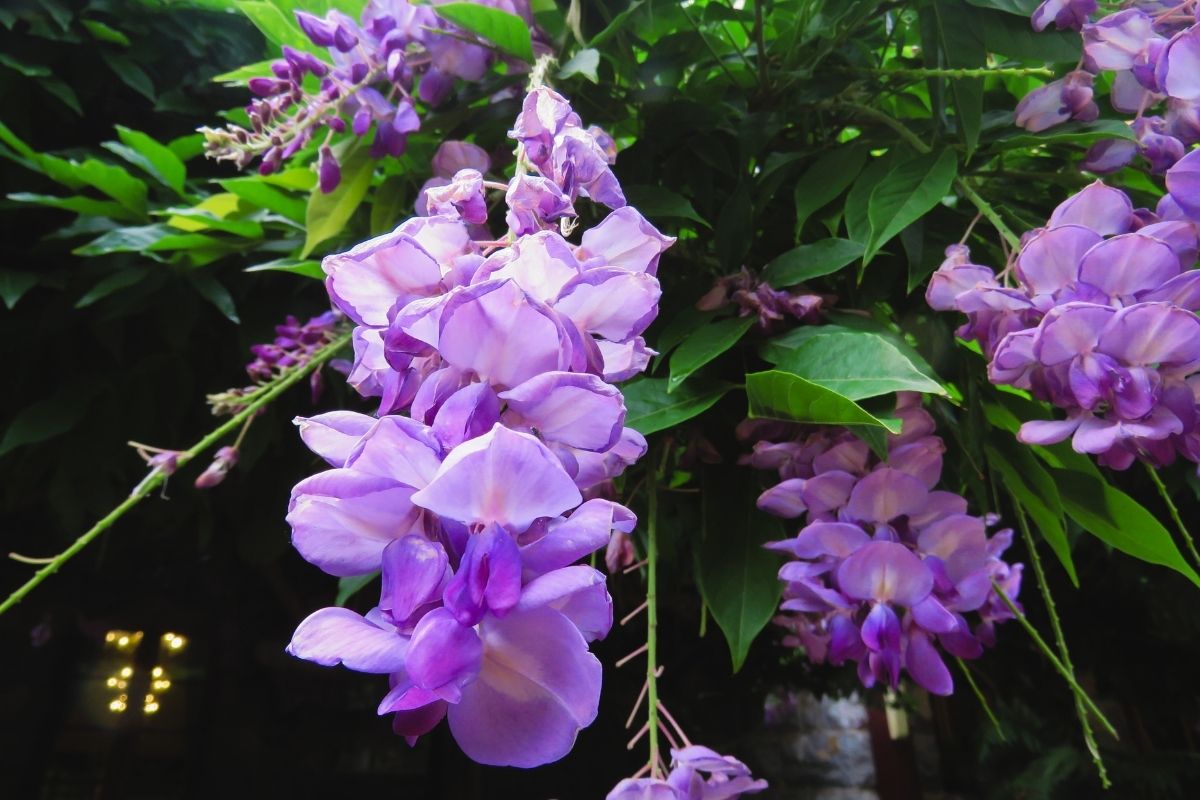
How to Keep Wisteria Under Control
Before learning how to grow and care for a wisteria vine, it is important to learn how to control it. Unfortunately, the popular Chinese (Wisteria sinensis) and Japanese wisteria (W. floribunda) can spread aggressively, choking out trees and native plants and causing damage to buildings.
The best option is to choose native varieties that will not become invasive, but if you have a beloved non-native wisteria plant that you can’t bring yourself to part with, careful pruning can keep its growth in check.
Wisteria vine pruning tips
Chinese and Japanese wisteria should be pruned twice per year to keep it from spreading too aggressively. The same techniques may be used on native wisteria to help shape the vines and encourage flowering.
1. Summer pruning
The first trim should occur after the flowers fade and the new growth begins looking unruly, around early to midsummer. Cut new shoots down to six inches long, and remove any from the main vine that are not necessary. Also, make sure to remove any suckers that have sprouted from the roots.
2. Winter pruning
A second pruning should take place in late winter, as a wisteria vine will continue to grow after its summer trim and can become a bit unwieldy even over a few months. Plus, the branches are easier to see without their foliage. Cut back lateral branches growing on the main trunk, leaving each with just three to five buds. You can also remove branches that are too crowded or unruly to improve the overall appearance of the wisteria.
How to contain wisteria roots
Because wisteria grows so tall, it also develops long anchoring roots to help stabilize the large plant. These roots can cause damage to buildings and hardscaping, and invasive wisteria especially can sprout even from a small root fragment. Given this, you will want to consider containing wisteria roots as well as the vines.
Avoid planting wisteria near walls, sidewalks, plumbing, and other structures. Corrugated metal sheeting can act as a barrier and help divert wisteria roots from structures that are too close to the destructive plant. You can even grow wisteria in a container!
If you decide to replace an invasive wisteria vine with a native variety (please do!), take care when removing the old plant. Manually removing every last bit of wisteria root is next to impossible. The best technique is to cut the trunk close to the ground, then carefully apply herbicide directly to the cut surface.
Best wisteria plant varieties to grow
Because Chinese and Japanese wisteria vines are invasive, native wisteria varieties are best. Look for American wisteria or Kentucky wisteria.
American wisteria (W. frutescens)
Native to the Southeast, American wisteria climbs up to 30 feet high with proper support and is hardy in USDA zones 5–9. It blooms later in spring than nonnative types but often produces a second crop of lovely flower clusters in mid- to late summer.
The popular ‘Amethyst Falls’ cultivar features large clusters of lavender-blue flowers. Others include the white ‘Nivea’ and deep bluish-purple ‘Longwood Purple.’
Kentucky wisteria (W. macrostachya)
Even hardier than American wisteria, Kentucky wisteria can survive winters in zone 3. It blooms a bit later, in June, but can flower as many as three times in a single season and has larger flower clusters. With support, Kentucky wisteria reaches 25 feet high.
Try the ‘Blue Moon’ cultivar, which produces long, one-foot flower clusters with a bluish-purple hue and wonderful fragrance.
How to Grow Wisteria
[sc name=”wisteria-quick-links-code-v1″]
Wisteria thrives in sunny south- or west-facing exposure where it climbs by using its twining shoots. Every spring it produces cascades of lovely lavender flowers.
One of the loveliest of all the hardy climbing plants, wisteria is also among the earliest to bloom. From the South to the North, cascades of blue flowers begin to appear in early spring to tell us warm weather is on its way.
Wisteria can grow to an enormous size. Left unchecked, it can grow to a height of 15 feet or more.
The compound, pinnate leaves can have nine to 19 leaflets, depending on the species. Wisteria is deciduous, and the leaves appear either at the same same time as or just after the flowers. There is often a second flowering in late summer, but it is never as profuse as the first. The older it gets, the better it blooms.
Best place to plant wisteria
Wisteria is most successfully planted in a warm, sheltered spot facing south or west. Although it will tolerate some shade, wisteria produces more and better blooms in full sun.
And remember to keep wisteria away from structures and pipes that its roots might damage.
How to plant wisteria
Buy and plant wisteria in the spring or fall.
Wisteria prefers moist, well-drained soil: good, rich garden soil is best. If the soil is hard and clayey, mix in some compost before you plant. Dig a hole deep enough to comfortably fit the root ball and two or three times as wide. Settle the plant into its new home, fill in the hole around it with your rich soil, and water it thoroughly. Adding a good layer of mulch will help suppress weeds and hold in moisture.
For multiple vines – e.g., if you want to create a wisteria tunnel – leave 10 to 15 feet between each plant to allow the extensive roots plenty of room to sprawl.
Wisteria needs help to climb
Wisteria climbs using its strong, twining shoots, but it cannot grip a wall by itself and needs support in the form of a strong trellis, pergola, or arbor.
Giantex Outdoor Wooden Garden Arbor Arch Trellis Pergola Trellis Providence Arbor Metal Garden Arbor with Tree of Life Design
Metal Garden Arbor with Tree of Life Design Backyard Discovery Cedar Pergola 12′ by 10′
Backyard Discovery Cedar Pergola 12′ by 10′
There are many good wisteria varieties and hybrids
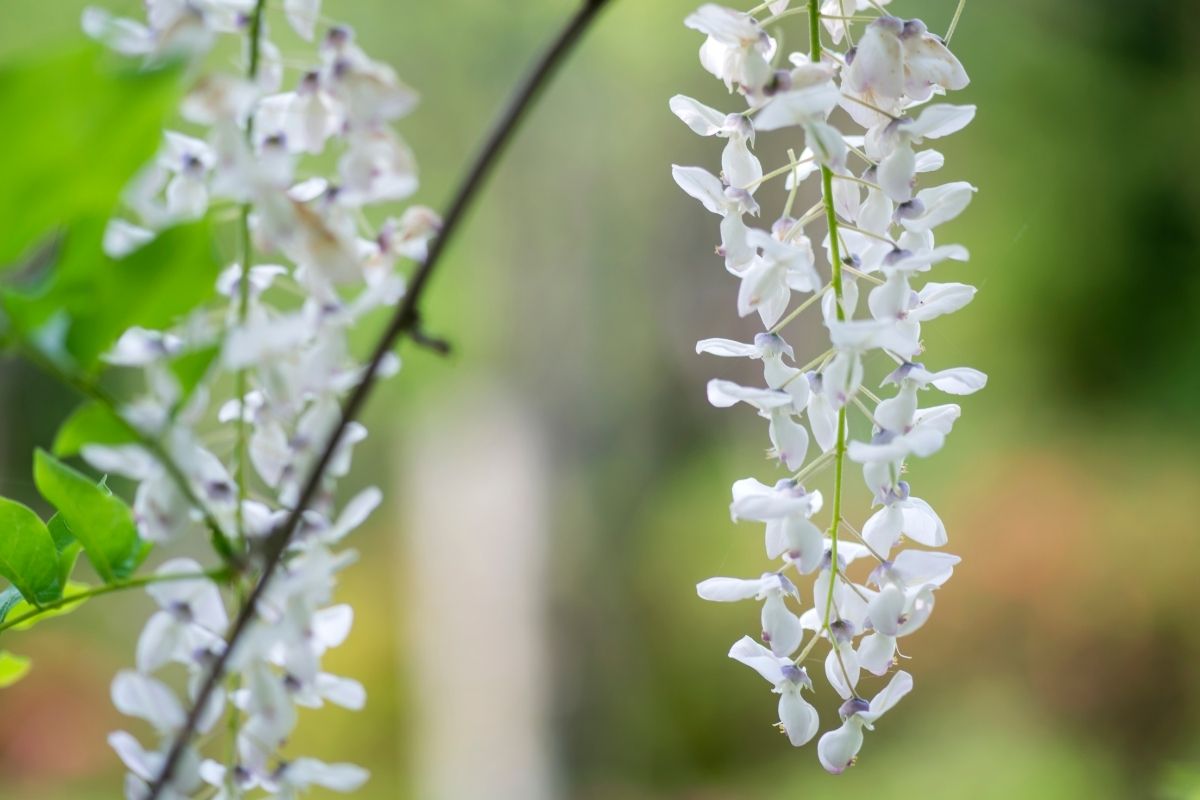
Again, native varieties — American wisteria and Kentucky wisteria — are best, but in case you have your heart set on one of the exotic vines and are willing to dedicate extra time and effort to keep them under control, here is a bit more about those species.
Although Chinese wisteria (W. sinensis) is native to the warmest provinces of China, it is quite hardy and will grow in much cooler climates. It is hardy to -10 to -20 degrees Fahrenheit.
Chinese wisteria has a Japanese relative, Wisteria floribunda. It requires similar conditions, but the flower color is more lavender-purple, and the flower clusters are longer.
Japanese wisteria opens its flowers gradually from the top of the clusters to the bottom, whereas Chinese wisteria opens its flowers nearly all at once. Japanese wisteria also comes in white- and pink-flowered forms, plus the spectacular ‘Longissima’ and ‘Longissima Alba’ varieties, which have incredibly long flower clusters. Given ideal conditions, these clusters can be up to five feet long.
Chinese and Japanese wisteria are invasive if not pruned properly and often. Remember to plant wisteria AWAY from paths and your house foundation. Remove fresh shoots throughout the summer to keep them under control. Or, plant wisteria in a large pot to contain it easier.
How to grow a wisteria tree
Did you know? Wisteria vines can be trained to grow into a graceful and stately wisteria tree!
At the time of planting, push a wooden stake six to 12 inches in the ground about a half-inch away from the trunk of the wisteria. Using tie tape (or similar), secure the trunk to the stake every eight inches or so, taking care not to restrict trunk expansion. The tie tape will need to be replaced as the wisteria tree grows, and the stake should eventually be swapped out for a larger, sturdier one.
To encourage globe-shaped branches at the top of the trunk, give any unruly branches a light trim as needed throughout the growing season. In late summer, after the flowers fade and before the first frost, the wisteria tree should also receive one hard pruning.
As with all types of wisteria, prune the current year’s growth back to five or six buds per branch, and completely remove any unwanted branches.
How to grow wisteria in a pot
One great way to contain aggressive wisteria is to grow it in a container. Purchase a wisteria plant with just one stem (this will be easier to train), and choose a container slightly larger than the nursery pot the wisteria came in. When you plant the wisteria in its new pot, add a sturdy stake about five to six feet tall and gently tie the trunk to it.
As the wisteria grows, continue tying it to the stake until it reaches the top. Once it outgrows the stake, trim off the top of the wisteria vine to prevent it from growing too tall. Prune new growth in late winter to six to 12 inches — potted wisteria is best grown as a wisteria tree (see the previous section).
Remember that wisteria roots also grow vigorously, so you will need to repot your wisteria as it grows, moving it to a slightly larger pot each time. Because containers dry out faster than the ground, closely monitor moisture levels as well. A general-purpose fertilizer should be applied in spring.
Wisteria’s Special Needs
When buying a wisteria, remember that it can become quite large and needs plenty of room. This goes for the roots too. They are very long and like to grow deep into the ground. If you plan to grow wisteria in a pot, make sure you use a container as large as possible (check out our large outdoor planters for ideas).
Wisteria care and grooming
Early to midsummer is the time for cutting back wisteria. Use this time to remove unwanted or overly long stems; otherwise, it will develop rampant, tangled growth and few flowers the following year. Cut the side shoots back to about six inches. This will encourage the growth of flowers from the same side shoots the following year.
A second pruning can occur in late winter; see “Wisteria Vine Pruning Tips” above for more details.
Feed with a balanced fertilizer two or three times during the season.
Move the plant only if it’s really necessary since this will usually set it back a bit. This should only be done toward the end of the winter dormant period.
Young plants may take a few years to settle down and start growing. There is nothing wrong if there aren’t any flowers for the first couple of years.
Watering and feeding
If planted against a warm, sunny wall, wisteria must be watered well. Never let it dry out. Plants that grow on hot walls get reflected heat and lose more moisture through evaporation than other plants in the garden, especially in dry weather.
Less water is needed in winter, but once the flower buds begin to form, regular watering is again needed. Feed with a well-balanced fertilizer up to three times a year.
Propagating wisteria
It is very easy to get wisteria seeds to grow: just soak them overnight and plant them in a seed tray. However, one can never be sure that the resulting plants will flower well. Wisteria grown from seed may never flower, and in most cases, even if it does, it may take years (up to 20) to do so.
A better method is to plant hardwood cuttings in late winter before the flower buds swell, or graft on rootstocks, which can be grown from seed.
Wisteria flowering and fragrance
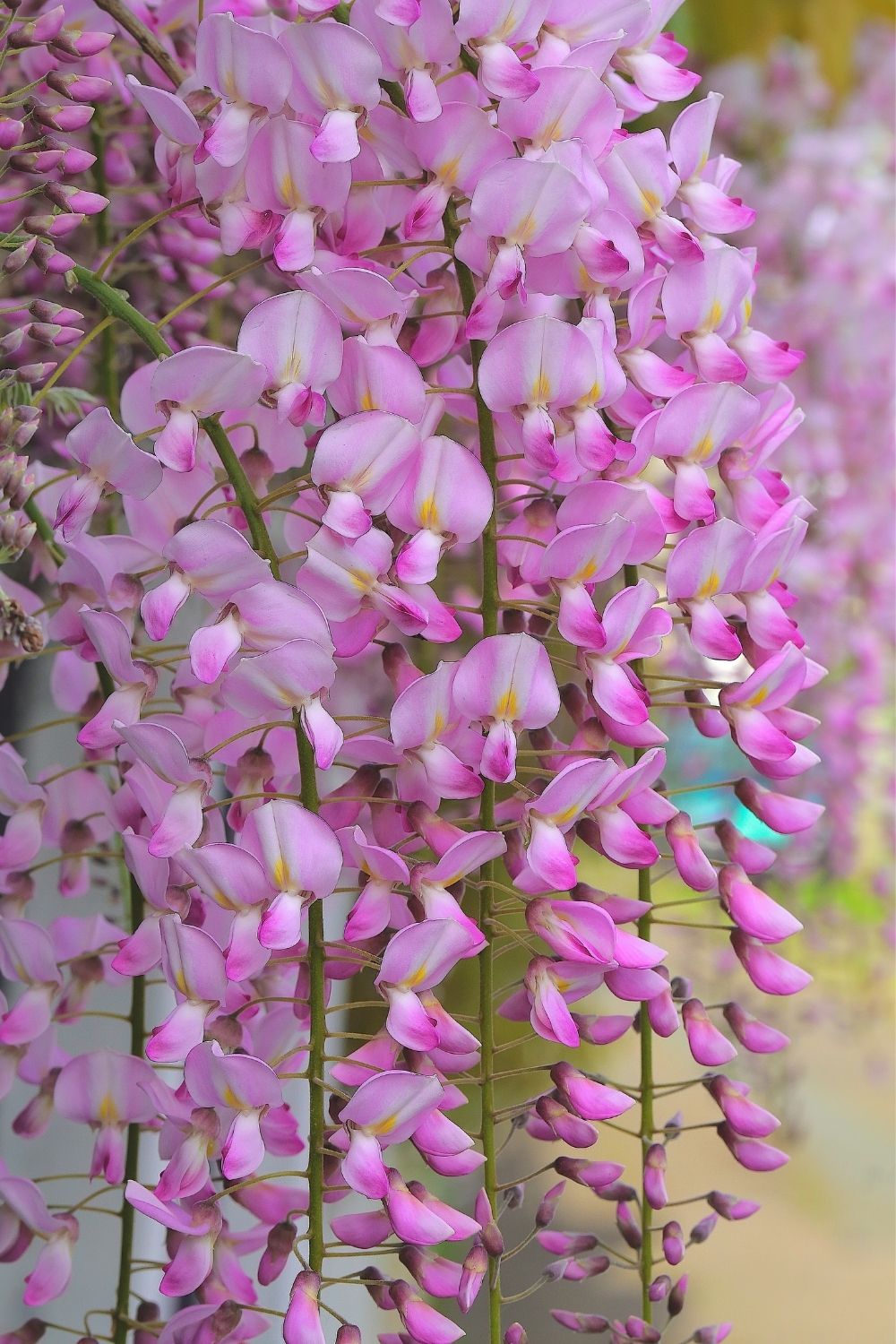
In a sheltered spot, wisteria can bloom quite early in the spring, but it usually takes three to five years from planting before it reaches mature “flowering age.”
The long, hanging cascades of flowers are mostly in various shades of lavender-blue, but there are also pink and white varieties. The flowers have a lovely sweet scent.
If you like sweet-smelling flowering vines, you’ll love growing honeysuckle.
Wisteria Vine Problems and FAQs
Why does my wisteria not have flowers?
The flowers may fall off if the weather is too cold and stormy. If your vine didn’t have blooms to begin with, it may be too young or not have ideal growing conditions.
How do I get my wisteria to flower?
It may take years for a wisteria vine to bloom, but the flowers are worth the wait. Most wisterias need to reach a certain age (three to five years or more) before they will bloom. If you’re wondering how to get your wisteria to bloom, flowering can be encouraged by planting wisteria in rich, fertile soil and full sun and pruning the vines in late winter.
Why does my wisteria have yellow leaves?
Yellow leaves and weak growth are probably the results of poor soil. Feed with a balanced fertilizer.
What types of pests attack wisteria?
Aphids and other insects may occasionally visit the wisteria, but rarely, if ever become a problem.
Why are there black patches on my wisteria leaves?
Fungus diseases are rare on wisteria, but if you see black patches on the leaves, treat the plant with a fungicide.
How fast does wisteria grow?
Chinese and Japanese wisteria grow fast and aggressively. Under the right conditions, some wisteria vines can grow as much as ten feet in a single growing season.
When do you plant wisteria?
It is best to plant wisteria in the spring, though you can also plant it in the fall.
How long does wisteria take to grow?
Wisteria takes several years to mature and begin flowering. The native Kentucky and American wisteria flower in just two to three years, while Chinese and Japanese wisteria can take as long as five years or more. If planted from seed or a cutting, wisteria can take even longer to bloom.
Can you grow wisteria from a cutting?
Yes! Wisteria grown from a cutting will take longer to mature and flower, but it can certainly be done. Plant hardwood cuttings in late summer, before the buds swell, or graft onto rootstock.
What do you do with wisteria in the spring?
Spring is the best time to plant wisteria. It is also a great time to provide fertilizer and resume regular watering.
How long does it take for wisteria to grow from seed?
Wisteria can take up to 20 years to flower when grown from seed if it flowers at all. Cuttings are more reliable for propagation.
Can I prune a wisteria in the spring?
Wisteria should be pruned in summer and late winter. It should not be pruned during the spring flowering season.
Do you deadhead wisteria?
Deadheading wisteria can encourage a second (or even third!) blooming later in the year and prevents the toxic seed heads from forming. Remove flower clusters when they wilt and droop.
Does wisteria need a trellis?
Yes! Wisteria requires some form of support structure, such as a trellis, arbor, pergola, or even just a sturdy stake.
Wisteria Pictures
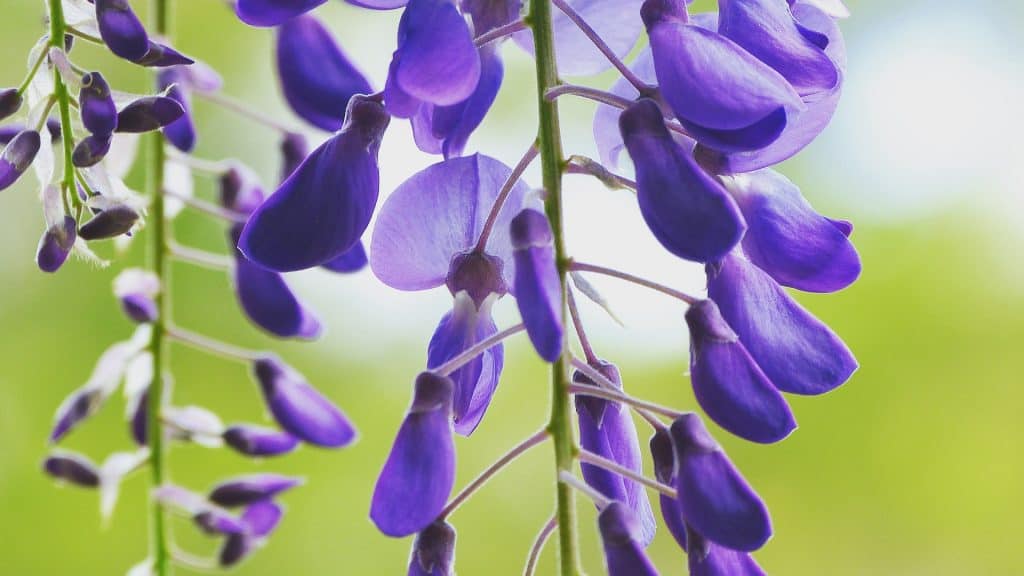
It’s nice to see the beautiful wisteria flowers gathered together in stunning displays, but I love looking at the individual flowers as well. So pretty!
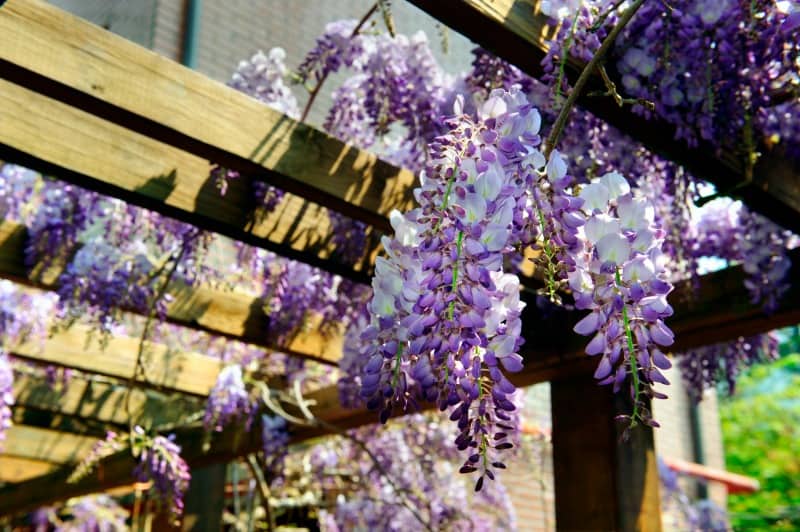
I can only imagine sitting under this wisteria vine with a good book on a late spring afternoon! Dreams…
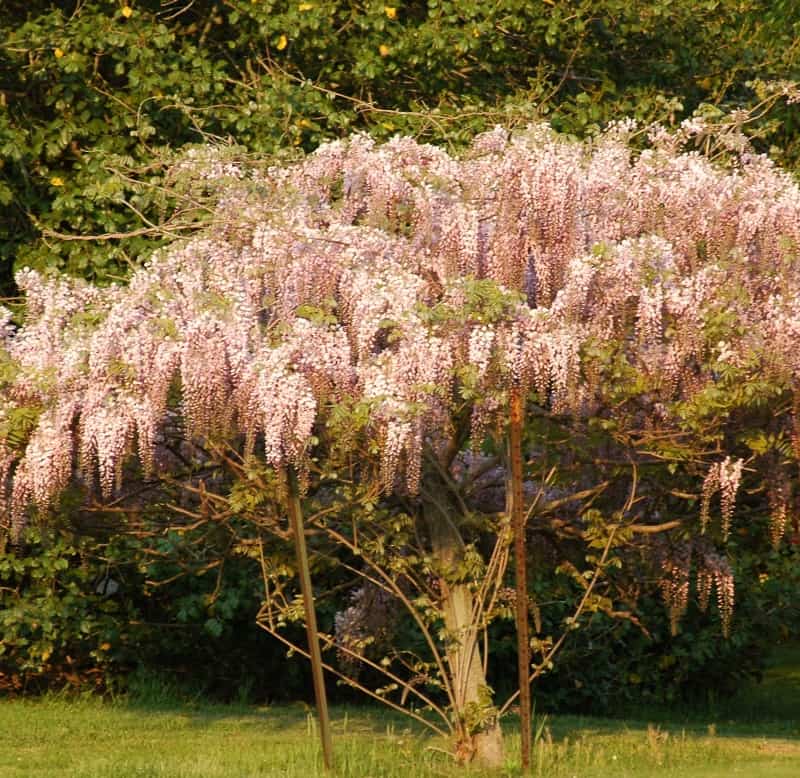
Wisteria is usually purple, but occasionally you’ll see a pink wisteria. What a delightful show of beauty!

This wisteria vine growing in the wild creates a beautiful scene.
Are you ready to plant a wisteria vine in your garden?
Now that you know how to grow wisteria (and let’s be honest: it’s quite easy), are you ready to plant one in your yard? An excellent climber to grow on a wooden pergola or arbor, the wisteria vine can add real beauty to your front yard.
It can also create the most enchanting quiet spot in your backyard, where you can escape to read a book or just listen to the birds and enjoy a quiet afternoon.
Remember that wisteria can overgrow if not pruned on time. Its roots can also grow quite big, so remember to plant it where it won’t disturb your house foundation or a nice path to your front door.
One last suggestion: since it’s a rather overwhelming plant, give it room and keep it as a solitary plant rather than mix it with other plants.
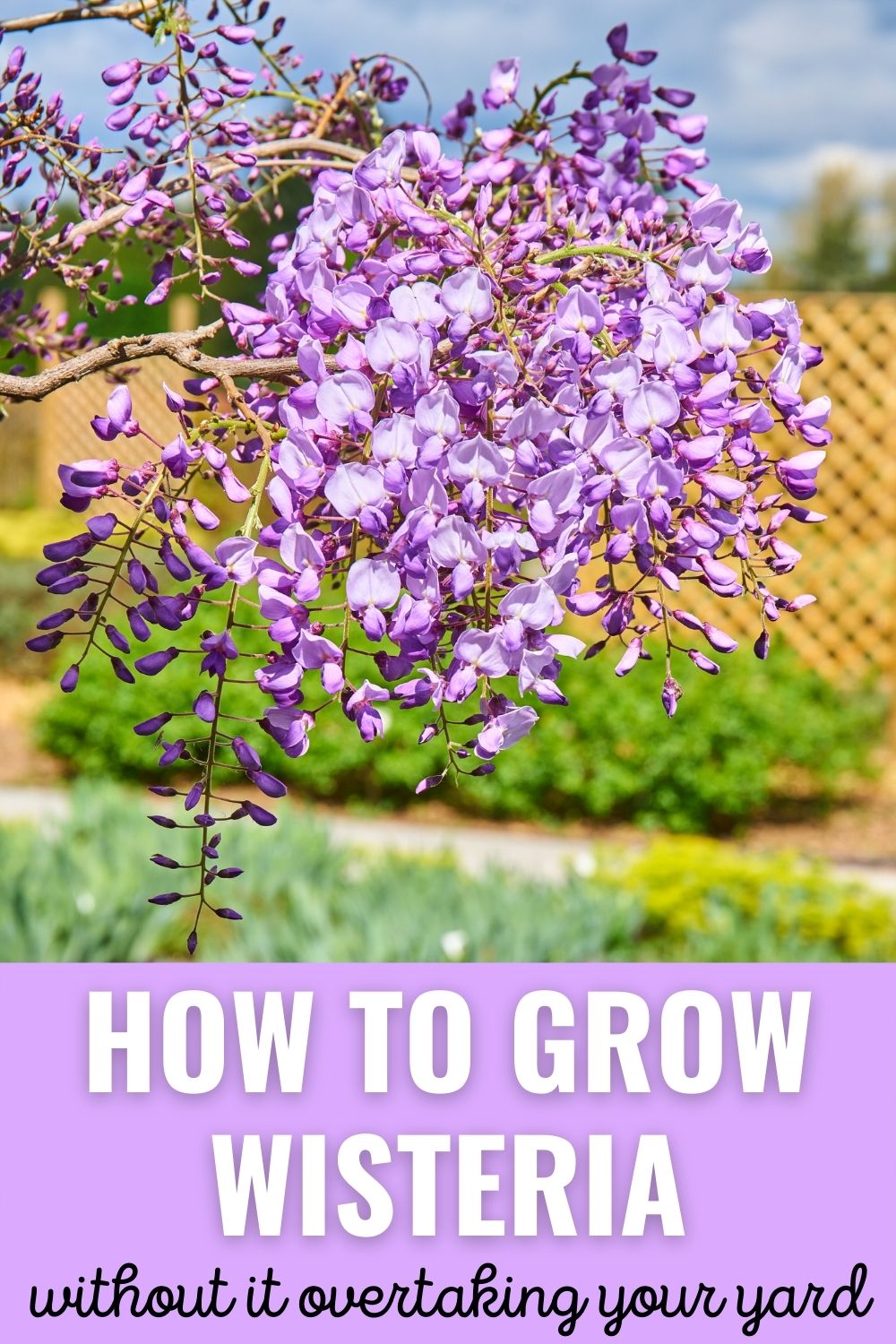










Kathy McGhee
Monday 14th of October 2024
Planted my wisteria over 20 years ago in a sunny location facing sw, and it has never bloomed! Why?
Adriana Copaceanu
Tuesday 15th of October 2024
Did you plant it from seed? If so, it may never bloom — same with cuttings. If it hasn't bloomed in so long, I'd get rid of it and get a new plant.
10 Simple Backyard Privacy Ideas
Tuesday 8th of August 2023
[…] Learn more about growing wisteria. […]
10 Gorgeous Purple Flowering Trees To Add Beauty And Attract Wildlife To Your Landscape
Tuesday 2nd of August 2022
[…] purple flowers of the Purple Robe locust drape down like wisteria for several weeks in late spring, from late May to early June in most of the United States. They […]
11 Best Weeping Flowering Trees For Small And Big Gardens Alike (With Pictures)
Friday 15th of April 2022
[…] American wisteria in full sun for best bloom (learn more about how to grow wisteria). The vine will grow in dappled shade, but it will not produce as many flowers. American wisteria […]
Si Namlitude
Friday 4th of March 2022
How well does wisteria tolerate being drowned on a river bank? I'm looking for something aggressive with a deep root structure, but it must be able to survive underwater for sometimes two or three months.
Adriana
Friday 4th of March 2022
I wish I could help, but I'm afraid I don't know if wisteria would be OK under water for that long